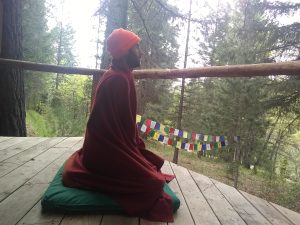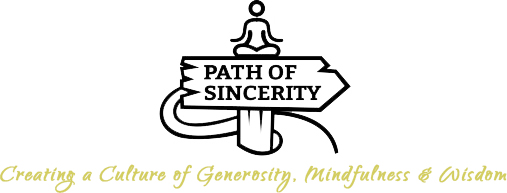
On Vocabulary
Right off the bat, I use the following words more or less interchangeably — mindfulness, awareness, mindful awareness, lucid awareness, presence, present moment awareness, observing, witnessing, noticing, recognizing, consciously aware, and probably some others.
For the two years I was with my teacher, Sayadaw U Tejaniya, I was wholeheartedly committed to being aware all day long, including around 12 to 16 hours a day of “formal meditation.”
However, in spite of all that practice, there were a number of times I came to him with complex questions around the subtleties, nuances, and nature of awareness, consciousness, and so on.
Nearly every time, he would look at me intently, as if sizing me up, and then say, “do you know what is awareness?” I would reply something like, “yes, but…” at which point he would say, “No buts. Just be aware. Keep it simple.”
In turn, while we could get into really interesting nuances, philosophies and differences among various Buddhist lineages and teachers, I find it more helpful to point right to the core of the experience. As they say in Zen, when a finger points at the moon, look at the moon, not the finger.
In other words, all these traditions are pointing to the same basic thing. Below is my attempt to point.
What Is Mindful Awareness?
While mindfulness is sometimes used synonymously with being conscientious, like being mindful of what you put in your shopping cart, I use it mostly to mean the experience of being consciously aware in the present moment.
For example, right now, you’re reading these words, can you recognize that body sensations are happening? Even while reading, maybe you feel the pressure of your body on the seat or ground. Perhaps there’s just a general sense of being a body in space. Whatever form it takes, rather than being a floating brain taking in words, there’s a way to read while being consciously aware of the body.
You could similarly notice in this very moment, that sounds are happening. Even if you are in a seemingly quiet room, there is that gentle hum of white noise that can noticed while reading.
Maybe you don’t even need “body” or “sound” or “sight” or anything else as an anchor; maybe it’s possible to just “relax and be aware.” To rest into the moment. To wordlessly notice that the present moment is happening — that this moment is essentially a full sensory symphony of sights, sounds, tastes, touches, smells, and mental activities. It’s to know what’s happening as it’s happening, instead of being lost in clouds of thought or a sleepy haze.
It’s possible to do this mindfulness thing in controlled conditions, like sitting still with your eyes closed and observing the breath. Sometimes this is a really helpful support.
However, it’s also possible to do all across the day, in any number of activities, simply by wordlessly remembering “there is a present moment.”
One powerful practice is simply to notice how this lucid awareness comes and goes. The easiest way to see it is during formal meditation, when you realize you were just lost in thought, but now are aware again. What is the difference between those two moments? If you get that, you know everything you need to know. Keep it simple.
Directed vs. Undirected Awareness
Sometimes people make the distinction between “directed” awareness, like focusing on the breath or body sensations, and “undirected” awareness, like noticing how when you relax the control, efforting, figuring out, and so on, there is a natural, unprompted awareness that’s right there.
While this distinction has its uses, I think it’s more helpful to notice that it’s the same basic awareness in both scenarios. In this way, we can learn how to be fluid and flexible with awareness — when is it more helpful to focus on something and when is it accessible to just rest into it?
Follow Up
If this brief description is confusing or you want a more direct pointer, check out the guided meditation I recorded that explores it a bit more deeply.
However, if you’ve meditated before, chances are you know exactly what I mean and your thinking mind is making it more complicated than it needs to be. As U Tejaniya told me, “Keep it simple.”
